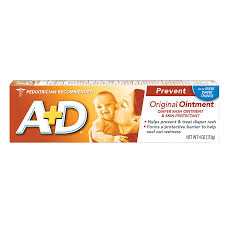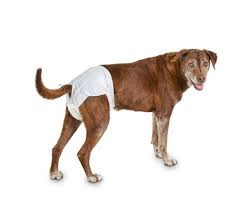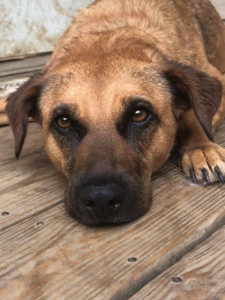This is a list of the commonly used terms in Rescued Rollers conversations. Some of these may be confusing to people who are new to the discussions surrounding special needs dogs. The glossary below provides explanation and definitions in simple terms.
Note: this is not an all inclusive list and these are simplified definitions. Further information with more detail can be found doing an internet search on the term.
Important! Always check with your vet for medial advice on using any of these products with your dog. Your vet is the best source for medical information and diagnosis of your dogs specific case.
A & D Ointment – a commercial ointment sold in baby aisle of drug stores. We use this ointment on dogs to aid in the treatment of “diaper rash” the same way you would with a human baby. Dogs who wear diapers develop a rash called urine scald (see also).
Arthritis in Dogs – inflammation of the joints and is a common problem for many dogs, causing pain, discomfort and stiffness. In dogs with arthritis, cartilage within a joint (hip, elbow etc.) changes or becomes damaged, making it less smooth and causing the bones in the joint to rub together.
Blind – inability to see. Complete loss of vision, or reduced vision field. Maybe caused by genetics, such as Double Merle (see also) breeding. Blindness may be the result of disease as in the case of diabetes in dogs. (see also)
Calmseptine – ointment or cream sold in health care and pharmacy stores for human use. We use for treatment of urine scald (see also) for dogs who are incontinent (see also) and wear diapers (see also).
Cosequin – joint supplement (see also). Aids in care of arthritis in dogs (see also) and to ease joint pain. Available online or where pet care supplies are sold. See official website for details.
Cranberry D Mannose – natural supplement (see also) for dogs, used to aid in urinary tract infections (see also). Studies indicate that this supplement helps prevent certain kinds of bacteria from sticking to the walls of the urinary tract and causing infection. Available online and in pharmacy stores. This is another human product that can be used with dogs. Check with your vet for dosage amounts.
Crate Rest – a treatment used for dogs with spinal, orthopedic, or neurological injuries. Keeping your dog contained to the crate or small area to restrict activity levels. Similar to bed rest in humans.
Deaf – unable to hear. May be complete loss of hearing, or simply reduced hearing. Causes include genetics (see also Double Merle), injury, or disease side effect.
Diabetes in Dogs – similar to diabetes in humans, Diabetes mellitus is a condition that affects the amount of glucose, or sugar, in your dog’s blood. Diabetes occurs when your dog’s body makes too little insulin, stops producing it completely, or has an abnormal response to insulin. Treatments include insulin injections, diet management, exercise and veterinary support. Contact your vet if you think your dog may be diabetic.
Diapers – absorbent material used to collect urine and feces. Same application as diapers in human babies. Dog diapers come in male and female versions, they are not interchangeable. Available where pet supply products are sold. We use diapers with our incontinent (see also) dogs as part of the treatment for the medical condition, not as a housebreaking tool.
Degenerative myelopathy (DM) – also known as chronic degenerative radiculomyelopathy (CDRM), is a disease affecting the spinal cord, resulting in slowly progressive hind limb weakness and paralysis. The symptoms result from degeneration of the white matter of the spinal cord.
Double Merle – A double merle is created when two merle dogs are bred together. It doesn’t matter what color merle or what breed they are. A double merle inherits the merle gene twice. One copy of the merle gene causes a marbling effect on the coat and creates lighter spots throughout the solid color coat. Genetic problems resulting from this breeding include: blindness (see also) and deafness (see also).
Epilepsy in Dogs – most common neurological disorder seen in dogs, and has been estimated to affect approximately 0.75% of the canine population. The term epilepsy refers to a heterogeneous disease that is characterized by the presence of recurrent, unprovoked seizures resulting from an abnormality of the brain. Read more here.
FHO – or femoral head ostectomy, is a surgical procedure that aims to restore pain-free mobility to a diseased or damaged hip, by removing the head and neck of the femur (the long leg bone or thighbone). Read more here.
Glucose Curve – method of measuring insulin levels in treatment for diabetes in dogs (see also). Insulin levels are checked on periodic basis throughout the day to track peaks and valleys. Your vet will use this information to monitor and adjust the prescribed insulin injection levels. Read more here.
Hand Signal – a training technique used with deaf (see also) dogs in particular, but can also be used with all dogs. A defined motion you make with your hands, fingers, and arms, to equate with a verbal command. For example: pointing your finger and the ground to indicate “sit”, moving your arm across your body from left to right to indicate the dog should move in that direction, or simply Thumbs Up to indicate “Good Dog”.
Hip Replacement – similar to hip replacement in humans. This is a surgical procedure to remove and replace the hip joint with artificial pieces. Read more here.
Incontinent – inability to control bowel and bladder habits as a result of medical condition. This may be complete or partial loss of control. We use diapers (see also) with our incontinent dogs.
Intervertebral disk disease (IVDD) – is the most common cause of spinal cord injury in dogs. With proper attention, many dogs with this painful and debilitating condition can recover to a comfortable and more active lifestyle. IVDD is most common in short-legged breeds (dachsunds, beagles, etc.) Read more here.
Kidney Failure in Dogs – decline in function that occurs over a period of days. Dogs can develop acute kidney problems as a result of ingesting toxins, including antifreeze, certain medications, tainted foods, etc. Other reasons for this type of kidney failure include decreased blood flow or oxygen delivery to the kidneys, infections and urinary obstruction. Read more here.
Lift sling – mobility aid for dogs who have difficulty walking. A type of harness that fits around dog’s hindquarters or shoulders to allow owner to lift the dog and guide them, providing stability.
Nupro – a nutritional supplement (see also) to add to dog’s meals. We use this as a way to enhance the nutrients our dogs gain from their food. Especially good for helping dogs regain muscle tone and heal from medical circumstances. Check with your vet for dosage amounts. Read more here.
Physical Therapy – just like with human physical therapy, this is a way to assist dogs recovering from medical procedure, overcome injuries and regain mobility. Typically, therapy is accomplished with exercise and play activities that focus on muscles. Stretches, swimming, walks and playing catch are therapies we have used with our dogs. Your vet will recommend the best therapy for your dog.
Potcake – the common name for AKC recognized breed Royal Bahamian Potcake. Originally the name derived for street dogs in the Bahama Islands from the food they were fed … cakes made from dinner leftovers in the bottom of the pot. Read more here and here.
Prosthetic – artificial limbs or device that allows normal weight-sharing on all legs which helps to eliminate overuse syndrome on the sound side of the shoulder, hip, or spine.
Range of Motion – exercises used in physical therapy (see also) that stretch muscles, ligaments, and tendons to increase the movement. Short range of motion equals extremely tight limbs and lack of flexibility.
Restricted Activity – limiting the activity of your dog while they heal from surgery or other medical condition. When our dogs have had an FHO (see also) they are restricted to crate rest (see also) to the extent that they were only outside to go potty. Follow your vet’s instructions to the letter for best results.
Spondylosis – characterized by the formation of osteophytes (bony spurs) that can bridge one vertebrae to another. It is commonly thought of as arthritis (see also) of the spine, however unlike arthritis this is a non inflammatory condition. Read more here.
Sub Q Fluids – Subcutaneous Fluids – administration is the term used to describe giving fluids into the space under the skin from where it can be slowly absorbed into the blood and body. Used as a treatment for dehydration. Check with your vet for dosage amounts and instructions.
Supplement – nutritional additions to your dogs diet. Commonly include vitamins and minerals, but might also be herbal or protein sources. Check with your vet for dosage amounts.
Swimmers Syndrome – also known as swimming-puppy syndrome, flat-puppy syndrome, swimmer puppy syndrome, flat-pup syndrome, twisted legs, or turtle pup, is an uncommon developmental deformity of newborn dogs where the limbs, primarily the hind limbs, are splayed laterally resulting in an inability to stand. Treatment includes physical therapy (see also), water therapy (see also) and splints. Read more here and here.
Thyroid Disease in Dogs – similar to humans. Low / Hypo or High / Hyper thyroid is a malfunction of the thyroid gland that affects how the body processes energy and nutrients. Metabolic rate is affected by either running too fast or too slow. Usually treated with medication, exercise, and diet. Talk to your vet for a specific treatment plan.
Triple Antibiotic Ointment – common over the counter medication for First Aid. We use this with sores on our paralyzed dog, from where she scuffs her legs crawling around the house.
Tripod – a dog with three legs. A term of endearment. Three legged dogs often have little to no difficulty maneuvering and mobility. If they do have mobility problems, use of a prosthetic (see also) or wheelchair (see also) improves the situation.
Turmeric Golden Paste – Nutritional herbal supplement (see also). Aids with inflammation and pain associated with arthritis (see also). We used this successfully with Josie, postponing her FHO (see also) for a couple of years. Get our recipe here. Check with your vet for dosage amounts.
Urine Scald – redness and soreness on skin due to urine. Similar to diaper rash in humans. Acid in urine leaves a burn on skin. Common in paralyzed dogs or incontinent (see also) dogs.
UTI / Urinary Tract Infection – same as in humans, bacteria in urinary tract causes inflammation, discomfort and pain. Can become fatal if untreated. See your vet if you suspect your dog has a UTI. Read more here.
Water Therapy – a form of treatment for dogs to help regain mobility and recover from surgery. Similar to treatment for humans. Water therapy for dogs involves swimming or walking on underwater treadmill. Goal is to take the weight off the limbs while allowing the dog to build muscle tone.
Wheelchair – a mobility device for dogs. Usually a metal framework attached to a harness with wheels. Can be two wheeled – front or back or four wheeled (quad). Dogs use these for physical therapy (see also) in recovering from injury, illness, or learning to overcome birth defect. A dog uses the wheelchair for mobility purposes only. He will not be in the chair all day long.
Wraps / Belly Band – cloth covering for a diaper (see also) often waterproof. For females a wrap looks like a pair of underpants. For males, the wrap is a band that goes around his midsection.







